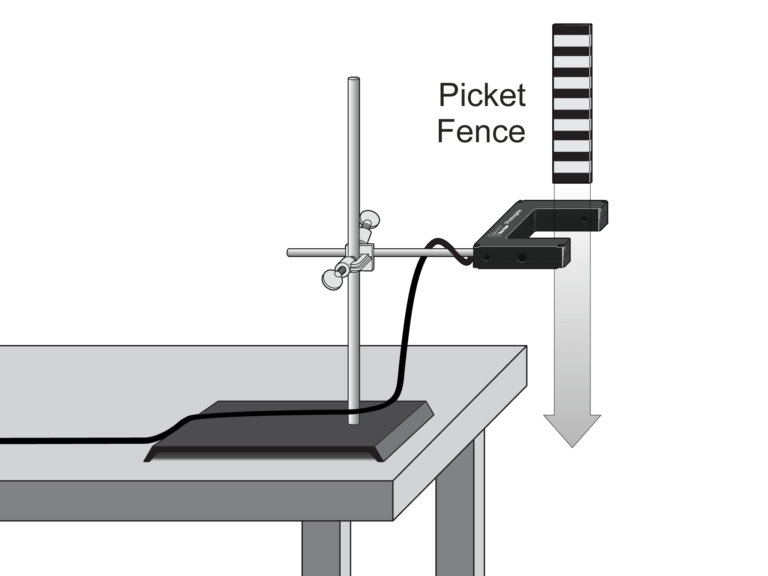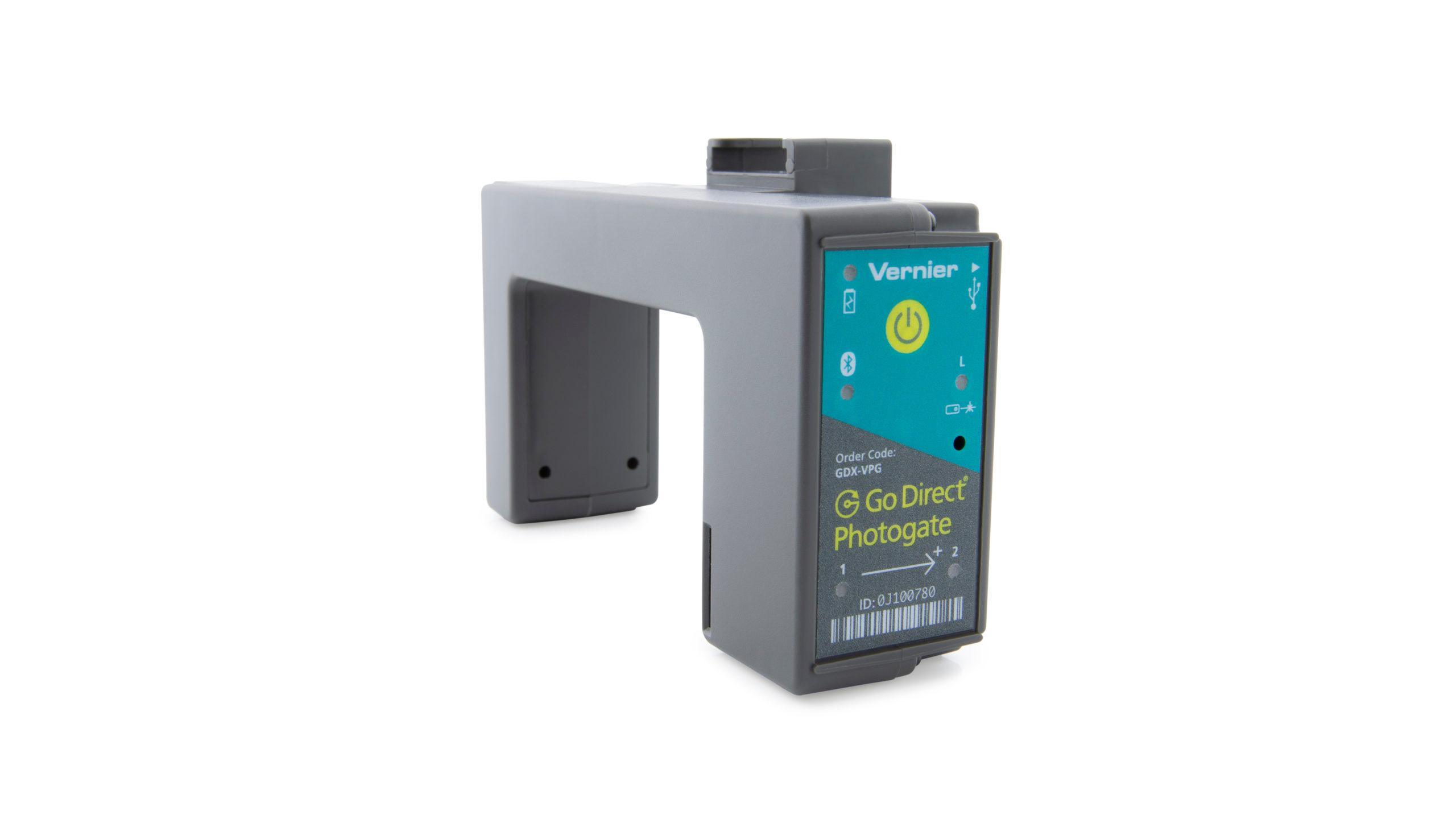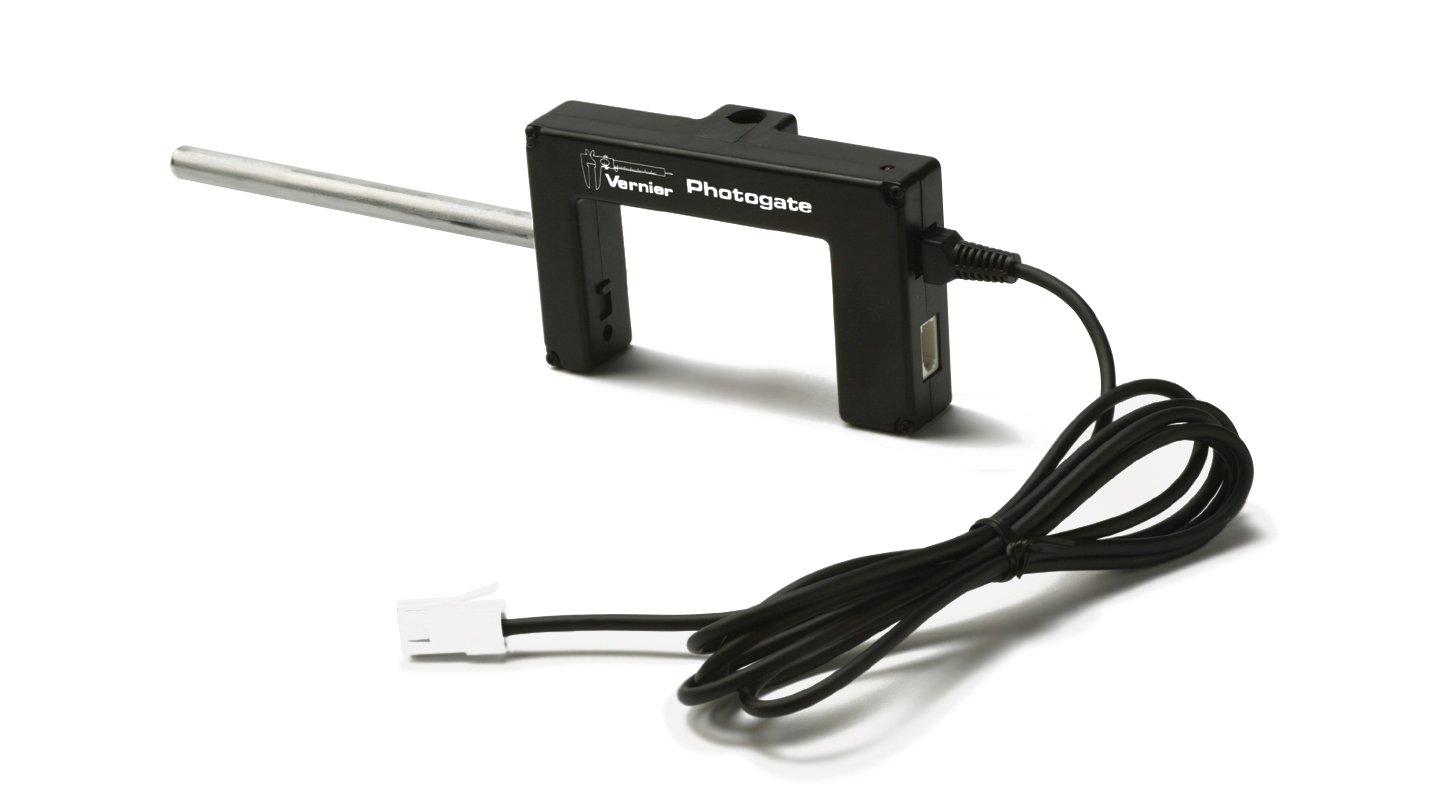
Video Overview
Introduction
We say an object is in free fall when the only force acting on it is the Earth’s gravitational force. No other forces can be acting; in particular, air resistance must be either absent or so small as to be ignored. When the object in free fall is near the surface of the earth, the gravitational force on it is nearly constant. As a result, an object in free fall accelerates downward at a constant rate. This acceleration is usually represented with the symbol, g.
Physics students measure the acceleration due to gravity using a wide variety of timing methods. In this experiment, you will have the advantage of using a very precise timer and a Photogate. The Photogate has a beam of infrared light that travels from one side to the other. It can detect whenever this beam is blocked. You will drop a piece of clear plastic with evenly spaced black bars on it, called a Picket Fence. As the Picket Fence passes through the Photogate, the interface measures the time from the leading edge of one bar blocking the beam until the leading edge of the next bar blocks the beam. This timing continues as all eight bars pass through the Photogate. From these measured times, the software calculates and plots the velocities and accelerations for this motion.
Objectives
- Measure the acceleration of a freely falling body (g) to better than 0.5% precision using a Picket Fence and a Photogate.
Sensors and Equipment
This experiment features the following sensors and equipment. Additional equipment may be required.
Ready to Experiment?
Ask an Expert
Get answers to your questions about how to teach this experiment with our support team.
- Call toll-free: 888-837-6437
- Chat with Us
- Email support@vernier.com
Purchase the Lab Book
This experiment is #5 of Physics with Vernier. The experiment in the book includes student instructions as well as instructor information for set up, helpful hints, and sample graphs and data.




